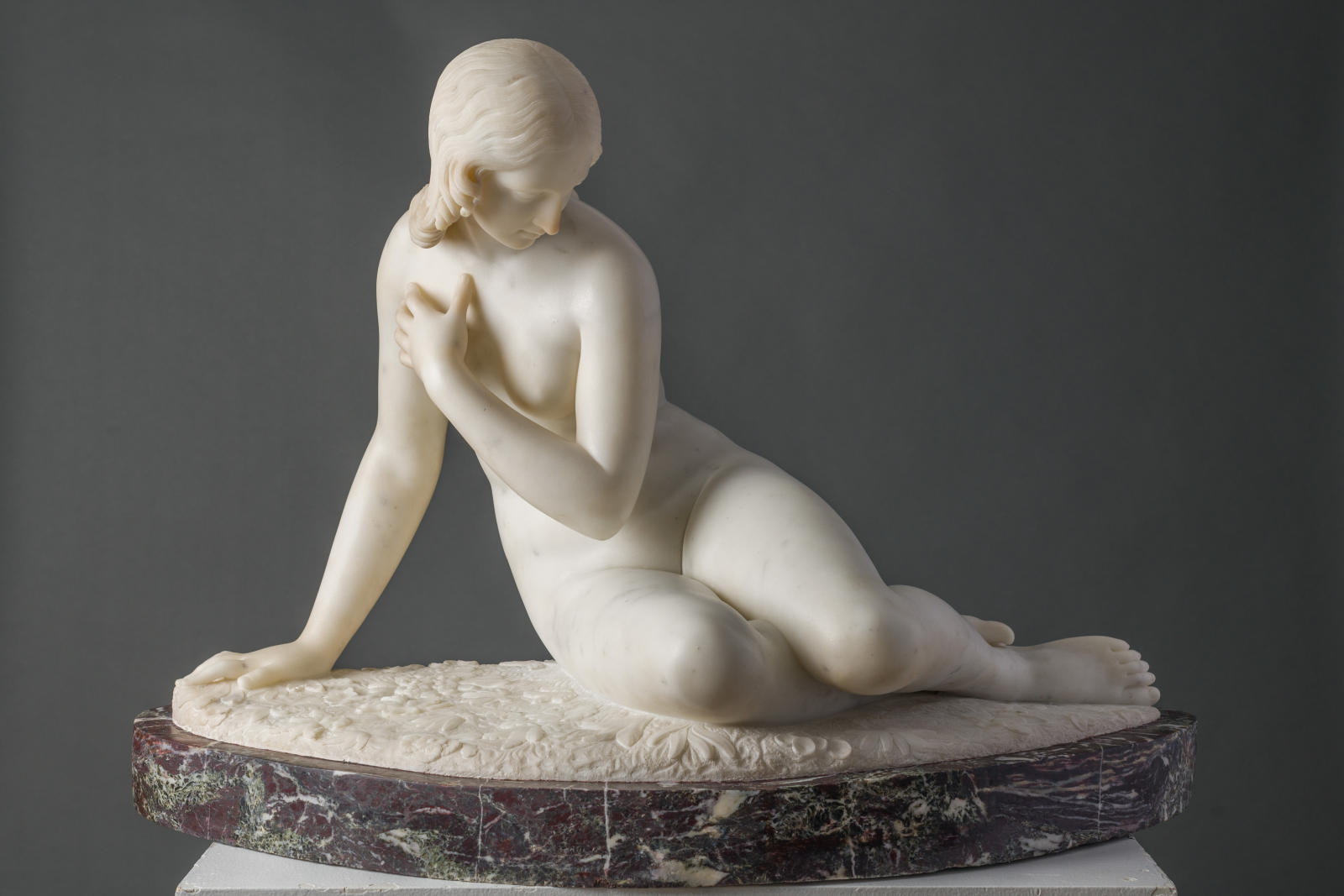artist
Edward Hodges Baily was a British sculpture artist born 1788 in Downend in Bristol, England. He died in 1867 in London, England at the age of 79. Baily was most famously known for his sculpture work of busts, statues of scientific, religious and literary figures, the most notable being from the Victorian era and earlier. He was awarded the Royal Academy gold medal in 1811 for his model of Hercules restoring Alcestis to Admetus.
Description
Baily’s Eve at the Fountain was exhibited back in the day at the Royal Academy in 1820. We believe that at that time, he exhibited a plaster version which now resides at the Victoria and Albert Museum in Britain. The first known marble version was exhibited in 1822 and resides currently at the Bristol City Art Gallery. Yet another version is in the collection of Carlsberg Glyptotek in Copenhagen.
The above goes to further the conclusion that this was a popular and widely desirable work by this artist. As with all marble compositions, an artist would have their atelier produce more than one copy and as many as possible if patrons ordered them. Once a marble is pointed, the re-carving of it is easier even if it is to be reduced or made larger. Our version may be smaller than some other versions which are actually desirable as it is a fairly large work to display. He was so successful with this model that he produced a marble called Eve Listening to the Voice of Satan, also held at the Victoria and Albert Museum.
Later in 1853, Baily exhibits Eve at the Fountain at the Great Exhibition and then in 1862 at the International Exhibition. The scholarly Henry Weekes wrote of it as “one of the most beautiful examples of English ideal Sculpture as yet to be known to us.”
What is widely appealing about this model, even today is the purity and simplicity of the subject. As it is Eve, there is no drapery as Eve did not wear clothes. The work is about discovery, purity and simplicity, and the ideal of the birth of a female, “the woman” on earth. It's possible that as Eve is by a fountain of water she is seeing her reflection and is learning of herself. By any standards, the composition and the form of Eve herself are tasteful, thoughtful, and demure.
The work in other versions is often signed on the base. Our version made it across the ocean indicating that it may have been acquired at some point by a wealthy American industrialist or businessman and brought back as a treasure from a trip to London. The condition is good and has every indication that it has been indoors during its life. It is sitting still on its original base which has fared less well over time.
It is a lovely female form in marble and translates well in the modern market for its clean lines. Due to the arduous nature of carving in marble, and the expensive nature of it, many sculptors believed in doing only important subjects or “ideal” forms and this marble was just that for Baily. His exhibition history of it and at least five versions indicate it to be a significant model. The date of our version would be between 1822 and 1867.
provenance
Private collection Puerto Rico c. 1985 then by descent to
Private collection New York
Stair Galleries, Hudson NY 2020







